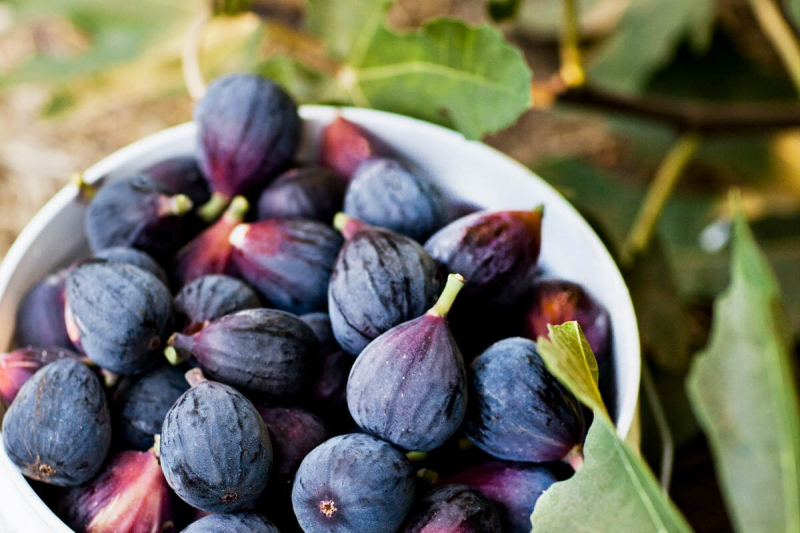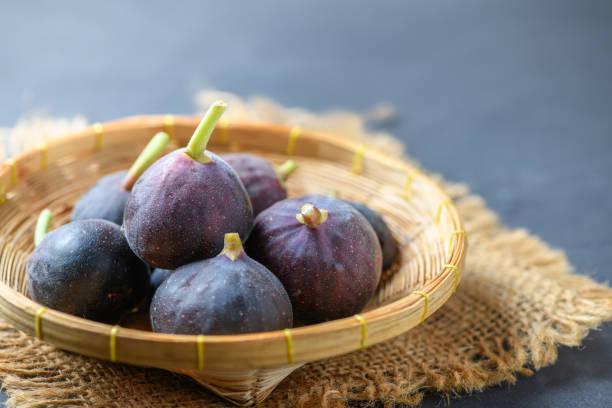Black Mission Figs
Figs grow on the Ficus tree (Ficus carica), which is a member of the Mulberry family. There are almost two hundred cultivars of figs, thus they grow in a wide range of shapes, colors, and textures. The common fig bears a first crop, called the breba crop, in the spring of last season's growth. The second crop is born in the fall of the new growth and is known as the main crop. Figs are botanically inverted flowers. Each fig is not a single fruit, but nearly fifteen hundred tiny fruits.
Black mission figs are available in early spring through early winter. Beginning in winter, night temperatures drop causing a change in the fruit's texture and the fig is no longer at its best for culinary use. The interior of the fig becomes woody and dry, and the seeds begin to separate from the flesh. When ripe, the strong peel of the "fruit" of the black mission fig frequently cracks around the stem end, revealing the pulp inside. A seed mass that is bound by flesh that resembles jelly is inside the smooth, creamy white interior. If not pollinated, the abundant edible seeds are typically hollow. Pollinated seeds are what give dried figs their distinctive nutty flavor.












